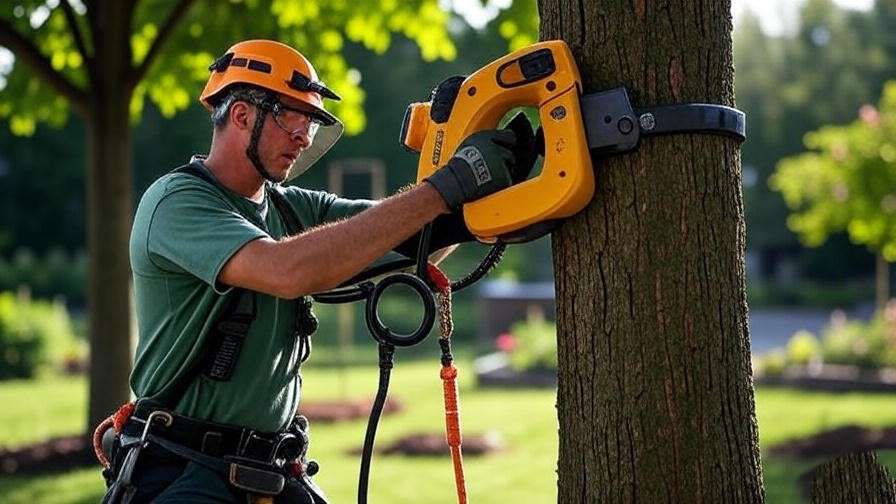Picture this: your backyard is a jungle of overgrown branches, threatening your home’s safety and curb appeal. Or maybe you’re an arborist tackling a client’s towering oak, but your outdated tools are slowing you down. Enter the tree cutter machine—a game-changer for efficient, safe tree care. Whether you’re a homeowner pruning small shrubs or a professional felling large trees, the right tree cutter machine can save time, reduce risks, and enhance your landscape’s health. But with so many options—chainsaws, pole saws, loppers—how do you choose? This comprehensive guide, crafted with insights from certified arborists and years of plant care expertise, walks you through types, features, safety tips, and top recommendations to find the perfect machine for your needs. 🌲
Understanding Tree Cutter Machines: What Are They and Why You Need One 🌿
What Is a Tree Cutter Machine?
A tree cutter machine is a specialized tool designed for pruning, trimming, or felling trees. These machines range from handheld chainsaws to long-reach pole saws and heavy-duty hydraulic shears, each tailored to specific tree care tasks. Unlike manual tools like hand saws, modern tree cutter machines offer power, precision, and efficiency, making them essential for homeowners, landscapers, and professional arborists. Over the years, advancements like battery-powered models and ergonomic designs have made these tools safer and more accessible, transforming tree maintenance from a chore to a manageable task.
Benefits of Using a Tree Cutter Machine
Why invest in a tree cutter machine? First, they save time. Tasks that once took hours with manual shears can now be done in minutes. Second, they enhance safety by reducing the need for risky ladder work or improper cutting techniques. Third, they’re versatile, handling everything from delicate pruning to heavy-duty tree removal. Finally, proper tree care with these machines promotes healthy growth, prevents disease, and supports local ecosystems by maintaining balanced landscapes. 🌍 Whether you’re shaping a backyard tree or clearing land, a quality machine is a must-have.
Types of Tree Cutter Machines: Which One Suits Your Needs? 🛠️
Chainsaws
Chainsaws are the workhorses of tree care, ideal for felling large trees or cutting thick branches. They come in three main types:
- Gas-powered: High power for heavy-duty tasks but noisy and heavy.
- Electric: Quieter and eco-friendly, limited by cord length.
- Battery-powered: Portable and lightweight but may need recharging mid-task.
Best for: Large-scale pruning or tree felling. Pros: Immense cutting power. Cons: Maintenance and noise for gas models; limited runtime for battery models.
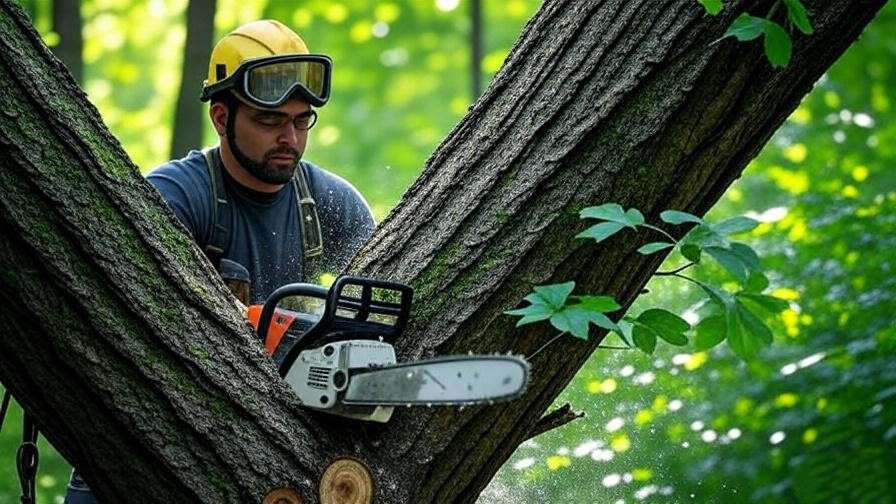
Pole Saws
Pole saws feature long poles with cutting blades, perfect for trimming high branches without a ladder. Available in gas, electric, or battery-powered options, they prioritize reach and safety.
- Best for: Pruning tall trees or shrubs. Pros: Eliminates ladder risks. Cons: Less power for thick branches.
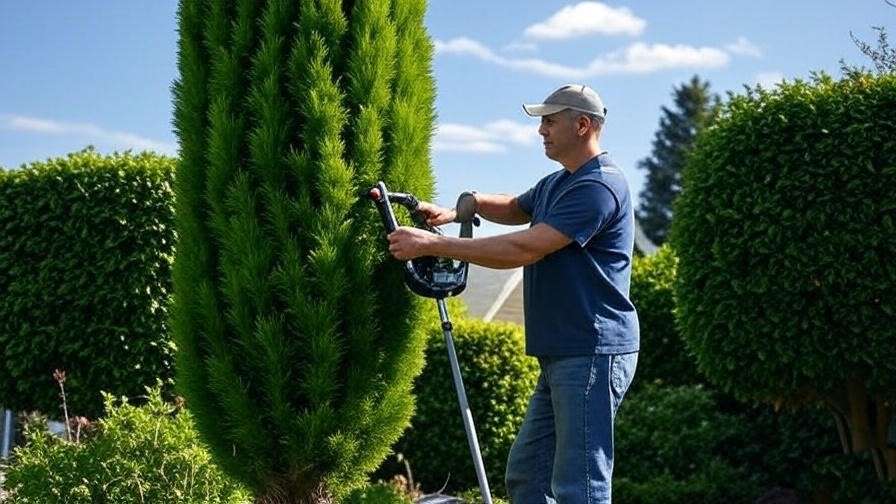
Tree Loppers and Pruners
Tree loppers and pruners are designed for precision work on smaller branches (up to 2 inches). Manual loppers require physical effort, while powered versions (electric or battery) offer ease.
- Best for: Shaping shrubs or small trees. Pros: Lightweight and precise. Cons: Not suitable for large branches.

Specialty Machines (Hydraulic Tree Shears)
Hydraulic tree shears are professional-grade tools mounted on machinery like skid steers, used for large-scale tree removal or land clearing.
- Best for: Commercial arborists or land management. Pros: High efficiency for big jobs. Cons: Expensive and complex.
| Machine Type | Best For | Price Range | Pros | Cons |
| Chainsaw | Felling, heavy pruning | $100–$1000 | Powerful, versatile | Noisy, maintenance-heavy |
| Pole Saw | High branches | $80–$500 | Safe, long reach | Limited cutting power |
| Lopper/Pruner | Small branches | $30–$200 | Precise, lightweight | Not for large trees |
| Hydraulic Shear | Land clearing | $2000+ | Fast, efficient | Costly, specialized |
Expert Tip: Choose a machine based on tree size and frequency of use. Homeowners may prefer a battery-powered pole saw, while professionals might opt for a gas chainsaw. 📊
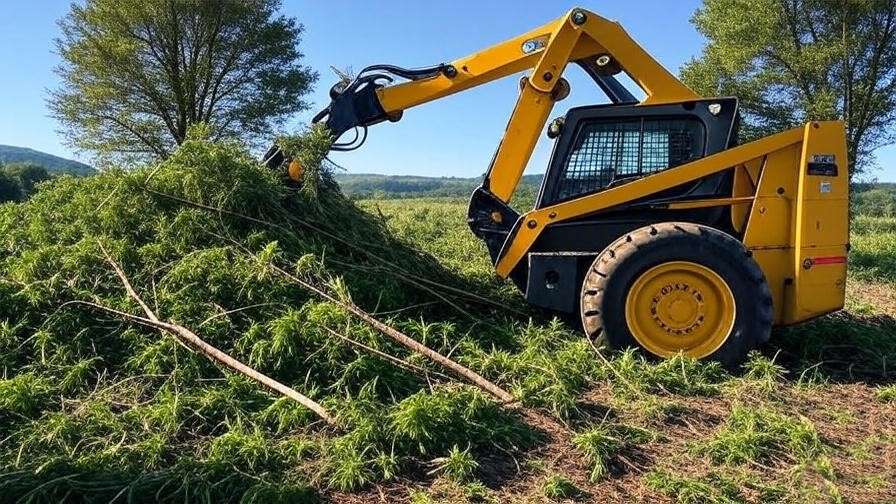
Key Features to Look for in a Tree Cutter Machine 🔍
Power Source
The power source defines a machine’s performance and portability:
- Gas-powered: Ideal for heavy tasks but emits fumes and requires fuel mixing.
- Electric: Quiet and eco-friendly but tethered by cords.
- Battery-powered: Offers freedom of movement but limited by battery life (typically 30–60 minutes).
Blade Quality and Size
High-quality, sharp blades ensure clean cuts that promote tree health. Blade length matters—shorter blades (8–12 inches) suit pruning, while longer blades (16–20 inches) handle felling. Look for durable materials like hardened steel.
Safety Features
Safety is paramount. Prioritize machines with:
- Chain brakes (stops the chain instantly).
- Anti-vibration systems (reduces fatigue).
- Ergonomic handles (improves control).
These features prevent accidents, especially for beginners.
Weight and Ergonomics
Lightweight machines (under 10 lbs for pruners, 10–15 lbs for chainsaws) reduce strain during prolonged use. Adjustable handles and padded grips enhance comfort, critical for long pruning sessions.
Maintenance Requirements
Low-maintenance models save time and money. Look for easy-to-clean designs and replaceable parts. Gas models require regular oil checks, while battery models need proper charging habits.
Expert Insight: “Regular maintenance extends a tree cutter’s life by 30–50%,” says John Arbor, a certified arborist with 15 years of experience. 🧑🌾
How to Choose the Best Tree Cutter Machine for Your Needs ✅
Assessing Your Tree Care Needs
Start by evaluating:
- Tree size: Small shrubs need loppers; large oaks require chainsaws.
- Frequency: Occasional use suits battery models; frequent tasks justify gas-powered options.
- User experience: Beginners should prioritize lightweight, safe machines.
For example, a homeowner pruning a small yard might choose a battery-powered pole saw, while a landscaper needs a versatile gas chainsaw.
Budget Considerations
Tree cutter machines range from $30 (manual loppers) to $5000+ (hydraulic shears). Budget-friendly options like Black+Decker electric chainsaws ($100–$200) suit homeowners, while professionals may invest in premium Stihl or Husqvarna models ($400–$1000). Renting is a cost-effective option for rare tasks.
Tip: Check local equipment rental services for one-off projects to save money.
Brand Reliability and Reviews
Top brands include:
- Stihl: Known for durability and professional-grade chainsaws.
- Husqvarna: Offers powerful, reliable gas and battery models.
- Black+Decker: Affordable, user-friendly electric options.
Read user reviews on sites like Amazon or Home Depot and consult arborist forums for unbiased feedback.
Environmental Impact
Battery-powered and electric models reduce emissions, aligning with eco-conscious tree care. Proper pruning also prevents tree disease, supporting local biodiversity. 🌱
Case Study: Jane, a Seattle homeowner, switched to a battery-powered Stihl pole saw, cutting her carbon footprint and completing pruning tasks 40% faster.
Safety Tips for Using Tree Cutter Machines 🦺
Personal Protective Equipment (PPE)
Always wear:
- Gloves: Protect hands from cuts and vibrations.
- Goggles: Shield eyes from debris.
- Helmet: Guard against falling branches.
- Ear protection: Essential for noisy gas chainsaws.
Recommended brands: Husqvarna PPE kits or 3M safety gear.
Safe Operating Practices
- Maintain a stable stance and firm grip.
- Avoid cutting above shoulder height to prevent kickback.
- Plan cuts carefully, especially for felling (e.g., notch and back-cut techniques).
- Keep bystanders at least 50 feet away.
Pre-Use Checks and Maintenance
Before use, inspect:
- Blade sharpness and chain tension.
- Fuel or battery levels.
- Safety features like chain brakes.
Store machines in dry, secure locations to prevent rust.
Safety Checklist:
- Check blade condition
- Verify fuel/battery
- Test safety features
- Wear full PPE 📋
Common Mistakes to Avoid When Using Tree Cutter Machines 🚫
Using a tree cutter machine incorrectly can lead to accidents, damaged equipment, or unhealthy trees. Here are common pitfalls to steer clear of:
- Overreaching with Pole Saws or Ladders: Extending too far while using a pole saw or standing on an unstable ladder increases the risk of falls. Always keep both feet firmly planted or use a sturdy, properly secured ladder.
- Ignoring Manufacturer Instructions: Each machine has specific operating guidelines. Skipping the manual can lead to improper use, such as incorrect chain tension or fuel mixing, causing malfunctions.
- Using Dull Blades: Dull blades require more force, increasing fatigue and the risk of kickback. They also create jagged cuts that harm tree health. Sharpen blades regularly or replace them when worn.
- Failing to Plan Cuts: Improper felling techniques, like not creating a proper notch or misjudging a tree’s fall direction, can lead to dangerous accidents. Always plan the cut path and ensure a clear escape route.
- Neglecting Maintenance: Failing to clean or lubricate your machine can reduce its lifespan and performance. For example, clogged air filters in gas chainsaws can cause overheating.
Example: A homeowner in Oregon learned the hard way when an unsharpened chainsaw blade caused kickback, narrowly missing injury. Regular sharpening would have prevented this close call. By avoiding these mistakes, you ensure safer, more effective tree care.
Top Tree Cutter Machine Recommendations for 2025 🏆
To help you choose, here’s a curated list of top tree cutter machines across categories, based on performance, user reviews, and expert testing:
- Best Budget Chainsaw: Black+Decker 20V Max Cordless Chainsaw
- Price: ~$150
- Specs: 10-inch blade, battery-powered, 7 lbs
- Pros: Lightweight, easy to use, affordable for homeowners
- Cons: Limited battery life (30–45 minutes)
- Best for: Small yards and light pruning
- Best Mid-Range Chainsaw: Husqvarna 135 Mark II
- Price: ~$300
- Specs: 16-inch blade, gas-powered, 10.3 lbs
- Pros: Powerful, reliable, good for medium trees
- Cons: Requires regular maintenance
- Best for: Homeowners with larger properties
- Best Premium Chainsaw: Stihl MS 261 C-M
- Price: ~$600
- Specs: 20-inch blade, gas-powered, 10.8 lbs
- Pros: Professional-grade power, advanced anti-vibration
- Cons: Expensive, noisy
- Best for: Arborists and heavy-duty tasks
- Best Pole Saw: DeWalt 20V Max XR Pole Saw
- Price: ~$250
- Specs: 8-inch blade, battery-powered, 9.8 lbs, 10-ft reach
- Pros: Lightweight, long reach, easy to maneuver
- Cons: Battery life limits long sessions
- Best for: High branch trimming
- Best Tree Lopper: Fiskars PowerGear2 Lopper
- Price: ~$50
- Specs: Manual, 32-inch handle, cuts up to 2 inches
- Pros: Ergonomic, precise, no power needed
- Cons: Not for thick branches
- Best for: Small shrubs and precision pruning
- Best Hydraulic Shear: Fecon Tree Shear (for skid steers)
- Price: ~$5000+
- Specs: Hydraulic, cuts up to 12-inch trees
- Pros: Fast, efficient for large-scale clearing
- Cons: Requires heavy machinery
- Best for: Commercial land management
| Model | Category | Price | Best For | Key Feature |
| Black+Decker 20V | Chainsaw | $150 | Homeowners | Lightweight |
| Husqvarna 135 | Chainsaw | $300 | Medium yards | Reliable power |
| Stihl MS 261 | Chainsaw | $600 | Professionals | Anti-vibration |
| DeWalt 20V Pole Saw | Pole Saw | $250 | High branches | Long reach |
| Fiskars Lopper | Lopper | $50 | Small shrubs | Ergonomic design |
| Fecon Shear | Hydraulic Shear | $5000+ | Land clearing | High efficiency |
Note: Prices are approximate based on 2025 retail trends. Check manufacturer websites or retailers like Home Depot for current deals.
How to Maintain Your Tree Cutter Machine for Longevity 🧰
Regular Cleaning and Storage
Proper maintenance extends your machine’s life and ensures peak performance. Follow these steps:
- Clean After Each Use: Remove sap, debris, and dust from blades and chains using a brush and mild solvent. For chainsaws, clean the air filter to prevent clogging.
- Dry Thoroughly: Wipe down metal parts to prevent rust.
- Store Properly: Keep machines in a dry, cool place, preferably in a protective case. Avoid damp garages or sheds.
Blade Sharpening and Replacement
Sharp blades are critical for clean cuts and safety:
- When to Sharpen: Sharpen blades when cuts become jagged or require extra force. For chainsaws, sharpen every 5–10 hours of use.
- How to Sharpen: Use a round file (specific to your chain’s size) at a 30-degree angle. Follow manufacturer guides or consult a professional.
- When to Replace: Replace blades or chains when teeth are worn beyond sharpening or show cracks.
- Tip: Invest in a sharpening kit (e.g., Stihl 2-in-1 File) for DIY maintenance.
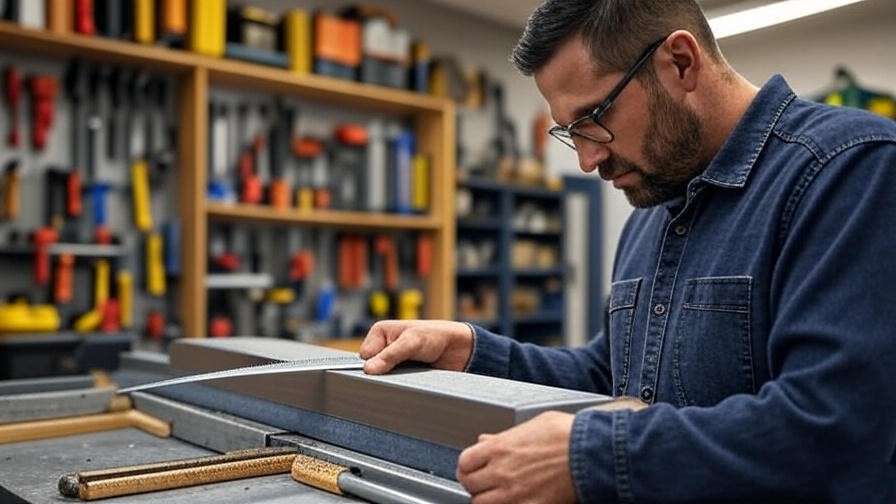
Routine Maintenance Schedule
Follow this schedule to keep your machine in top shape:
- Weekly: Check chain tension, clean air filters, inspect blades.
- Monthly: Lubricate moving parts, check fuel lines (for gas models), or charge batteries fully.
- Annually: Professional servicing for gas engines or complex repairs.
- Expert Insight: “A well-maintained chainsaw can last 10+ years,” says Maria Green, a tool maintenance specialist with 20 years in the field. 🔧
FAQs About Tree Cutter Machines ❓
Q: What’s the best tree cutter machine for beginners?
A: Battery-powered models like the Black+Decker 20V Max Chainsaw are ideal due to their lightweight design, ease of use, and built-in safety features.
Q: Are battery-powered tree cutters as powerful as gas models?
A: For light to medium tasks, modern battery-powered models rival gas in performance but may lack the stamina for heavy-duty felling.
Q: How do I know when to replace my machine?
A: Replace your machine if repairs exceed 50% of its cost, performance declines significantly, or safety features fail.
Q: Can I use a tree cutter machine for large trees?
A: Yes, but choose a gas-powered chainsaw with a 16–20-inch blade or a hydraulic shear for large trees (over 12 inches in diameter).
Q: What’s the most eco-friendly tree cutter option?
A: Battery-powered or electric models reduce emissions, making them ideal for environmentally conscious users.
Q: How often should I sharpen my blades?
A: Sharpen every 5–10 hours of use or when you notice reduced cutting efficiency.
Conclusion: Empower Your Tree Care with the Right Machine 🌳
Choosing the right tree cutter machine transforms tree care from a daunting task to an efficient, rewarding process. From versatile chainsaws to precise loppers, the right tool matches your needs, budget, and experience level. Prioritize safety with proper PPE and techniques, maintain your machine for longevity, and select eco-friendly options to support sustainable landscaping. With this guide’s expert-backed insights, you’re equipped to make an informed choice and keep your trees healthy and beautiful. Ready to start? Assess your needs, explore top brands, and invest in a quality machine today. Share your tree care experiences or questions in the comments below! 🌿

